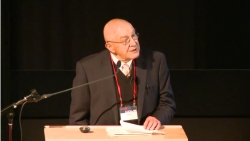
Five years ago an extraordinary team of people from the two universities, the two health authorities, the metro Vancouver municipalities and regional government and TransLink got together to run a conference with an innovative idea-that creating communities around walkability was the intersection between health, happy places, liveliness and aging in place.You can view some of the proceedings from the Walk21 Metro Vancouver conference here.
Now Co.exist and others accept as doctrine the innovative concept that the conference was trying to impart-that a walkable city is a sustainable, sociable well designed city that puts the health and well-being of residents first. In fact while the relationship between walkability and health status has already been established, this study “published in the Lancet, looked at 14 cities in 10 countries, all of which had a similar design, in order to determine whether or not the cities’ layouts themselves were the reason for increased health, as opposed to different lifestyles in different countries. The physical activity of the 14,222 adult participants was measured over four to seven days using Fitbit-style accelerometers. The principal data point was the average number of minutes walked per day.”
Looking at cities in Australia, South America, Europe and three cities in the United States there were some surprising findings, specifically that urban factors that meant people walked more included “residential density, park and public transport density, and intersection density. Parks are obvious in their effect—people take walks in parks. Residential density is important because if you live in a compact neighborhood, you can easily walk to do your errands. And public transit density is important because not only does it obviate car use, but people have to walk to their nearest station instead of their driveway”
Mixed use development, density, and convenient transit go hand in hand in making walkable places. We’ve now got the evidence to convince policy makers of the important interconnectedness of these three things to design for walkable sustainable communities that support happier, healthier residents of any age.


